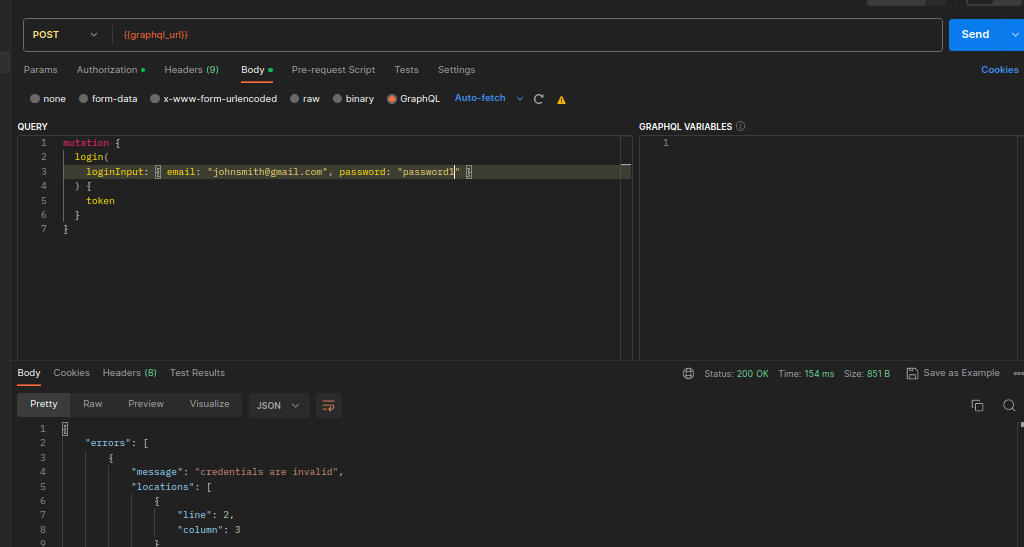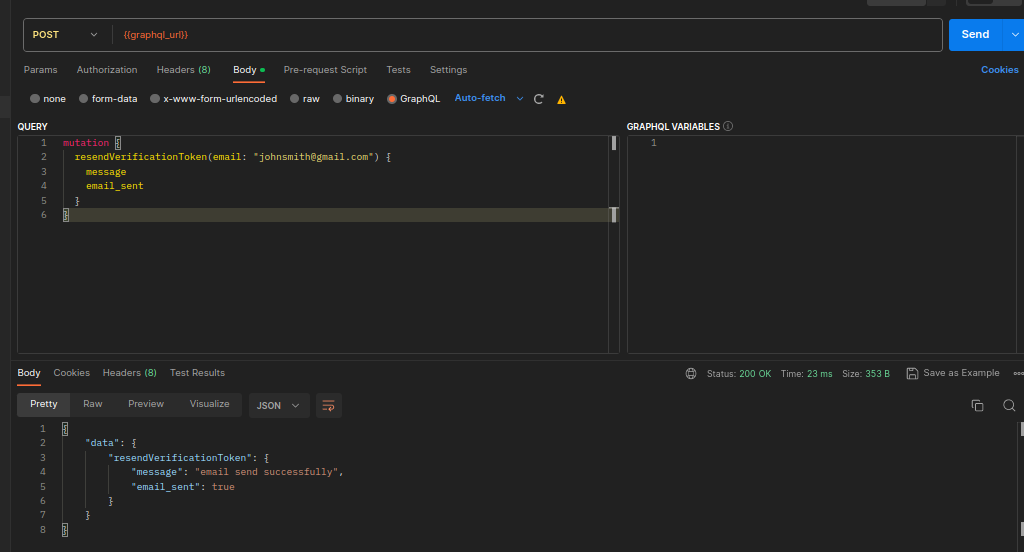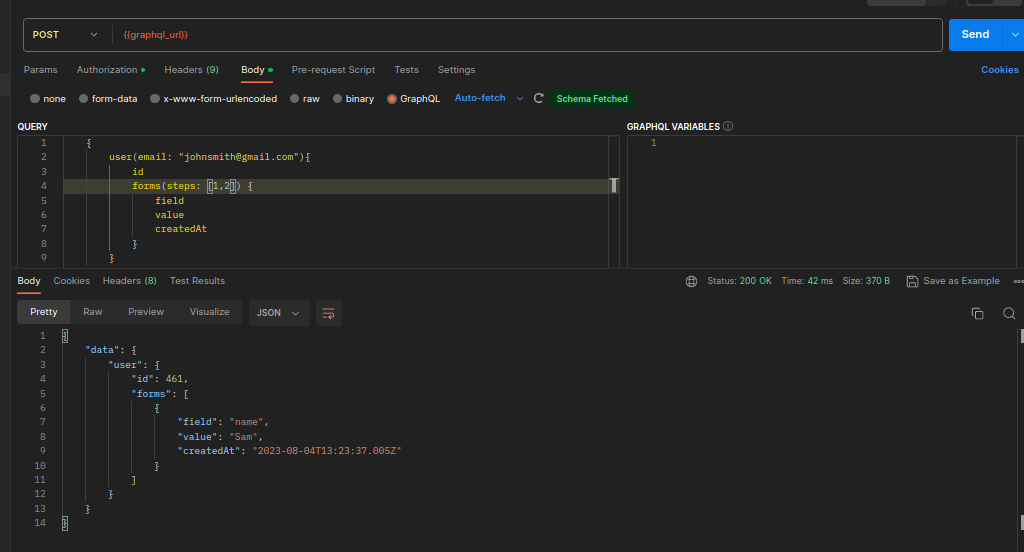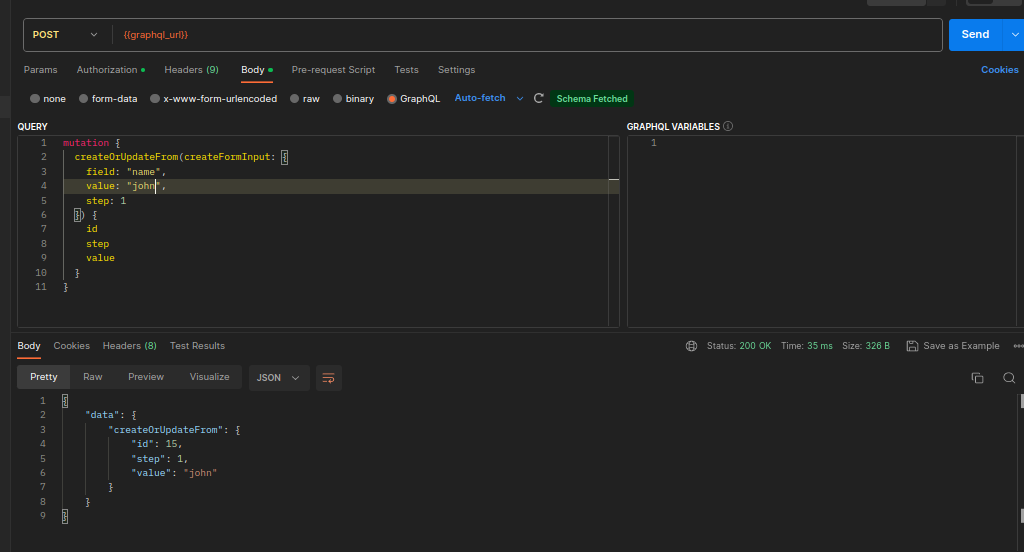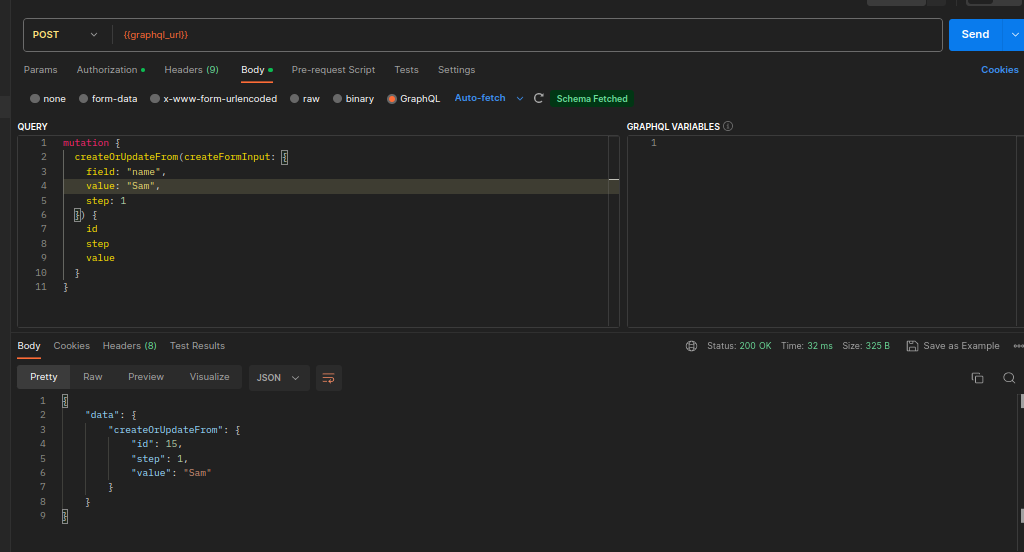This is a sample application that demonstrates a multi-step registration process using GraphQL and NestJS.
- User Management
- Registration
- Login
- Email Verification
- Authentication & Authorization
- Form
- Set Forms For Each Step Of Registration
- Update Forms
- Retrieve Form For Step(s)
- Files
- Upload File(s) For Each Form
- Update File(s) For Each Form
- Delete FIle(s) For Each Form
This project uses the following technologies:
-
GraphQL: GraphQL is a query language for APIs and a runtime for executing queries with your existing data. It provides a more efficient and flexible alternative to traditional REST APIs.
-
NestJS: NestJS is a progressive Node.js framework for building efficient, scalable, and reliable server-side applications. It is built with TypeScript and leverages modern JavaScript features and design patterns.
-
PostgreSQL: PostgreSQL is a powerful and open-source relational database management system. It offers scalable, reliable, and high-performance storage for your application's data.
-
Prisma: Prisma is an open-source database toolkit that simplifies database access and management. It provides an intuitive API for database queries, migrations, and schema management.
-
Apollo Server: Apollo Server is a GraphQL server implementation for Node.js. It allows you to build GraphQL APIs with ease, providing features like schema generation, resolvers, and data fetching.
-
JWT (JSON Web Tokens): JWT is an open standard for securely transmitting information between parties as a JSON object. It is commonly used for authentication and authorization purposes in web applications.
-
Jest: Jest is a JavaScript testing framework that is widely used for testing JavaScript applications, including NestJS projects. It provides a simple and intuitive API for writing unit tests, integration tests, and end-to-end tests.
-
Clone the repository:
git clone https://github.com/BaseMax/OnboardingGraphQLTS.git
-
Navigate into the project directory:
cd OnboardingGraphQLTS -
Install the dependencies:
npm install
-
Set up your PostgreSQL database and update the database connection settings in the
.envfile(use.env.sample). -
Run the migration to create the database tables:
npx prisma migrate dev
-
Start the server:
npm run start:dev
-
The app will now be running at
http://localhost:3000.
This project includes unit tests and integration tests for the backend functionality.
To run the tests, use the following command:
npm testJest will execute all the tests and display the results.
You can get full Graphql file schema in /src/schema.gql file
- user Fetch user and his/her forms
- isPhoneExist return true if user with this phone exists
- isEmailExist return true if user with this email exists email exists
type Query {
user(email: String, phone: String): User
isEmailExist(email: String!): Boolean!
isPhoneExist(phone: String!): Boolean!
}- register
register user with correct credentials
RegisterInput - login
login to account with correct credentials
LoginInput - resendVerification resend email to unverified user
- createOrUpdateForm
create or update form with
createFormInputinput
type Mutation {
register(registerInput: RegisterInput!): AuthToken!
login(loginInput: LoginInput!): AuthToken!
resendVerificationToken(email: String!): EmailMessage!
createOrUpdateFrom(createFormInput: CreateFormInput!): Form!
}- Form user form type for each step of registration
- User user model with account information
- AuthToken output type for register/login mutation
- Email Message output type for resendEmailVerification mutation
type Form {
id: Int!
step: Int!
userId: Int!
field: String!
value: String!
createdAt: DateTime!
updatedAt: DateTime!
}
type User {
id: Int!
f_name: String!
l_name: String!
email: String!
phone: String!
post_code: String!
country: String!
address_detail: String!
email_verified: Boolean!
languages: [String!]!
createdAt: DateTime!
updatedAt: DateTime!
forms(steps: [Int!]!): [Form!]!
}
type AuthToken {
token: String!
}
type EmailMessage {
message: String!
email_sent: Boolean!
}- RegisterInput register input (register dto) for register mutation
- LoginInput login input (login dto) for login mutation
- CreateFormInput create form input (form dto) for each step form
input RegisterInput {
f_name: String!
l_name: String!
email: String!
phone: String!
password: String!
post_code: String!
country: String!
address_detail: String!
language: [String!]!
}
input LoginInput {
email: String!
password: String!
}
input CreateFormInput {
field: String!
value: String!
step: Int!
}Feel free to check onBoardGraphQLTS.postman_collection.json file and import it into your Postman.
Copyright 2023, Max Base



